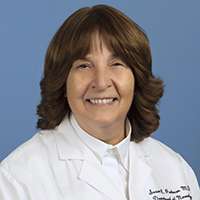Faculty Profile: Susan Perlman, MD
Summer 2020
There is always something that can be done

Over my past three decades as a clinical professor in the division of Neurogenetics, I have been able to build subspecialty clinics that diagnose and treat Friedreich’s ataxia (my research interest when I was a fellow in training), Huntington’s disease (a Huntington’s Disease Center of Excellence for 15 years), and cerebellar ataxias of all types (genetic and non-genetic). When I opened our initial “Ataxia Clinic” in 1986, I was often asked why I had a clinic for a “symptom”. No genetic tests were available at the time to help with diagnosis and no treatments were even in development.
It was my relationships with the dedicated patients and families suffering from these rare, progressive, incurable disorders that made me want to continue working with them to provide what information, advice, and guidance that I could. In the late 1990’s genetic testing began to be developed, and I started seeing individuals who had been told, “your genetic test shows what you have, but there is nothing that can be done.” I knew, however, that there is always something that can be done -- recommendations for rehabilitation treatments, medications for treatable symptoms, referrals for resources to improve quality of life or network with other families, genetic and family counseling, and updates on current research.
We have reached the point now, with national and international groups (including National Ataxia Foundation, Friedreich’s Ataxia Research Alliance, Huntington’s Disease Society of America) spearheading the development of disease-modifying therapies, that I have been able to open our Neurogenetics Clinical Trials program. We have four natural history studies running, as well as eight clinical drug trials (with another six due to start). I am now following the third generation of some families I met many years ago. Together we hope to improve access to diagnostic and research opportunities and to respond to the huge unmet needs in these rare diseases.